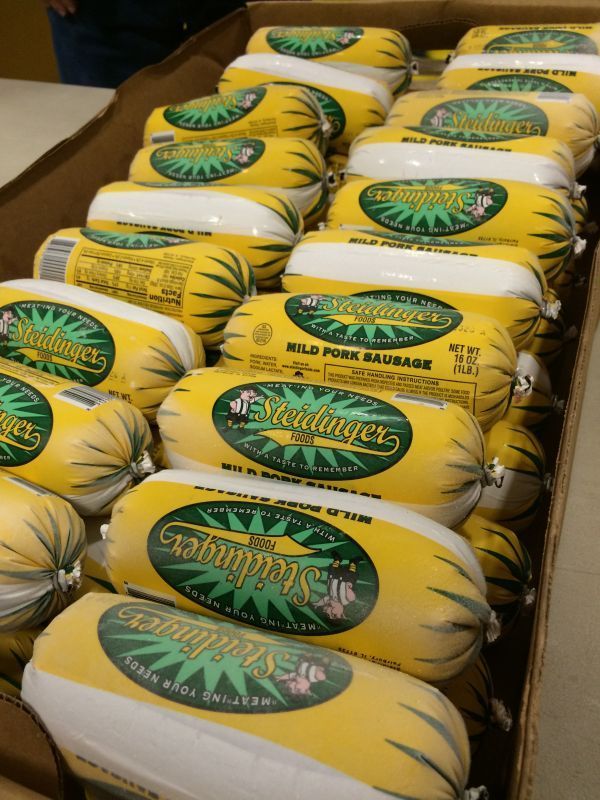IL Corn and Partners Donate Pork to Hungry Illinois Families

As part of Pork Power: Partnering to Fight Hunger in Illinois campaign, the Illinois Pork Producers Association (IPPA), the Illinois Corn Marketing Board, and the Illinois Soybean Association, presented three local foodbanks with 12,800 pounds of ground pork this month.
Since its inception in 2008, Pork Power has generated over 916,000 pounds of pork - enough for over 3 million meals - for families throughout Illinois.
Farmers and partnering commodity groups give a combination of whole hogs for processing and monetary donations all year round. Near the end of each calendar year IPPA turns the remaining funds into ground pork and divides it among the regional foodbanks in the state for the holiday season.
“Now more than ever, we see the need to support our communities by supplying those in need with high quality protein,” states IPPA board president Dale Weitekamp. “The protein supply is available, and we are working hard to get it in the right hands just in time for the holidays.”
Due to current restrictions in our state, more families might be spending the holidays in multiple places. We hope that this pork donation will come in good timing for those extra household meals.
“The Pork Power project is one of my favorite projects IL Corn invests in,” commented Dirk Rice, ICMB Chairman. “As a farmer, I feel very connected to the job of feeding hungry people and this project allows all farmers, all over Illinois, to do just that. I’ve seen how happy the foodbanks and their customers are to receive the excellent protein source we are donating. This is a great opportunity to give back to our communities, work together for good, and eat more pork.”
“Illinois Soybean Farmers are proud supporters of the Pork Power program as it provides access to pork to hungry families throughout the state by partnering with Feeding Illinois,” said Doug Schroeder, ISA Chairman. “We support the ongoing efforts of this program as it shows how soybean, corn and pig farmers in Illinois continue to support the local communities in which they live.”











































































































